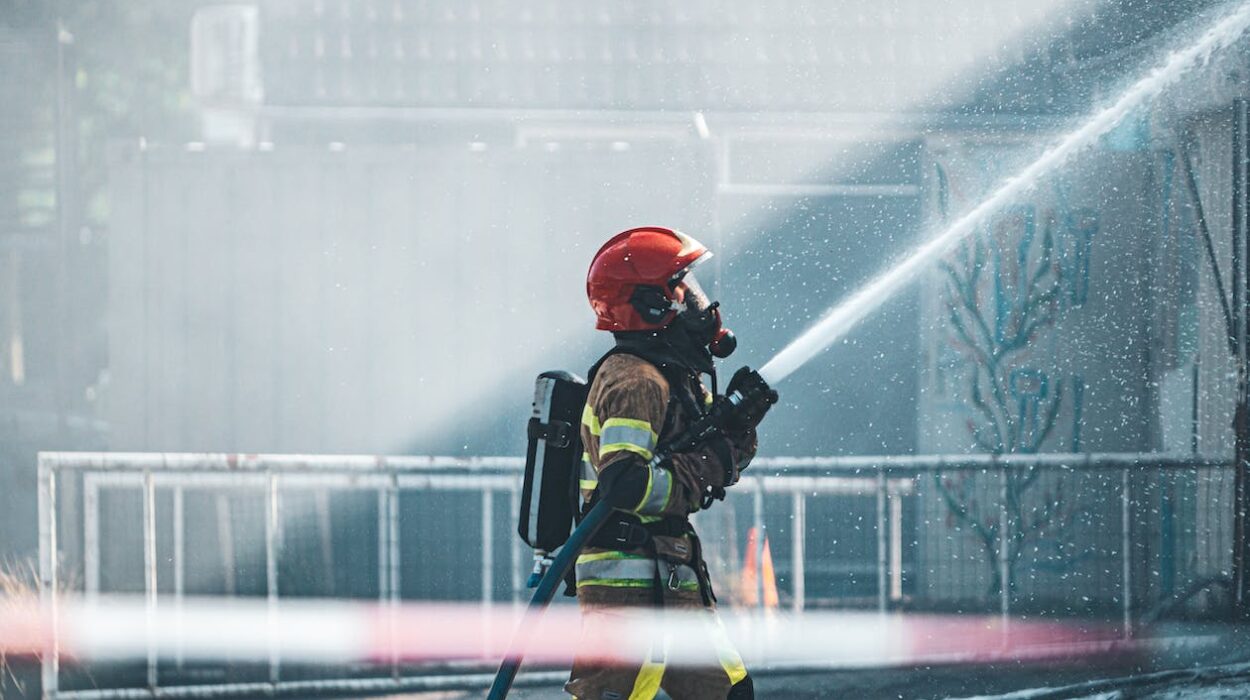Have you ever considered the ramifications of a fire outbreak in your community? The devastating consequences can be felt far and wide, affecting lives, livelihoods, and the environment.
In a world where fire incidents can spark catastrophe at any moment, the need to protect our vulnerable sectors has never been more pressing. From industrial facilities to residential neighborhoods, the threat of fire looms large, ready to engulf everything in its path.
In this blog, we will offer actionable strategies that empower you to shield at-risk sectors from the ravaging flames.
Aviation Operations
The aviation sector faces a significant risk of accidents, including the potential for fire-related incidents. The International Air Transport Association (IATA) reported a rise in total accidents within the commercial aviation industry write for us technology, with 39 incidents recorded in 2022. This is a significant surge from the 29 occurrences in 2021.
Whether stemming from plane crashes or other incidents, accidents within the aviation sector frequently result in substantial, engulfing fires. This underscores the critical necessity of enforcing rigorous safety measures. A few of these measures are examined in the following sections.
Cutting-Edge Fire Detection
You can enhance aviation safety by investing in advanced fire detection systems. These high-tech sensors can swiftly identify even the tiniest traces of smoke or heat, alerting you to potential dangers before they escalate. By having these tools in place, you ensure that fires are detected in their earliest stages, allowing quick intervention to prevent disasters.
Rigorous Staff Training
Equip yourself and your team with the knowledge to act decisively in fire emergencies. Through regular training, you’ll learn how to handle fire-related situations swiftly and efficiently. You can master techniques like using firefighting equipment, evacuating passengers, and coordinating with emergency services.
Robust Fire Containment Systems
Installing advanced fire containment systems within aircraft and airport facilities can significantly reduce the spread of fires. These systems compartmentalize and suppress flames, granting valuable time for evacuation and response efforts. Prioritizing such measures creates a safe environment for all the entities.
Military Facilities
Due to the storage of items like firearms and grenades, military installations are at a heightened risk of fire accidents. Even a minor fire can result in extensive financial and human losses. Swift and effective rescue strategies are imperative for rapid protection against such threats Guest Blog Posting Services UK.
To begin with, a crucial step involves evaluating vulnerabilities and devising well-structured response plans. This initial assessment lays the foundation for effective strategies in addressing potential threats. By thoroughly understanding weak points and formulating comprehensive responses, the ability to mitigate risks is greatly enhanced.
Another vital approach involves effective compartmentalization within the facility’s design. By dividing the facility into distinct sections with fire-resistant barriers, you can prevent the rapid spread of flames. This containment strategy not only buys valuable time for evacuation and firefighting efforts but also limits the overall extent of the damage.
In terms of fire control, it’s advisable to steer clear of utilizing aqueous film-forming foam (AFFF). As per TorHoerman Law, AFFF has been utilized at military installations since its inception in the 1960s. However, AFFF contains PFAS compounds, which studies have identified as having carcinogenic properties.
This harsh reality has come to light following the exposure of numerous individuals to its adverse consequences. Those who have experienced exposure are pursuing legal actions, such as filing a firefighting foam cancer lawsuit. By filing lawsuits, they are seeking restitution for financial hardships and other compensatory damages. The legal action also underscores the urgency of addressing the use of AFFF.
Chemical Plants
Chemical plants, engaged in hazardous experiments and storing chemicals with potential human effects, are as vulnerable to fire incidents as any other industry. Recent data reveals a total of 224 incidents involving fires, explosions, and the release of harmful chemicals in the year 2022.
What’s more, more than 175 million Americans live in close proximity to chemical facilities classified as high-risk. These trends underscore the crucial duty to safeguard both the plant workers and the wider communities affected by these facilities.
By embracing the strategies outlined below, you actively contribute to mitigating the vulnerabilities posed by fire threats in chemical plants.
- Stringent Chemical Handling Protocols: Establish thorough protocols for the storage and handling of chemical substances. This includes regular inspections, proper labeling, and secure containment to minimize the risk of chemical leaks or reactions that could lead to fires.
- Strategic Chemical Segregation: Implement meticulous segregation of chemicals based on their compatibility and reactivity. By keeping volatile substances isolated from one another, you can significantly minimize the risk of chain reactions and uncontrollable fires.
- Innovative Process Design: Employ innovative process design that incorporates inherent safety features. By employing inherently safer technologies and processes, you can inherently reduce the potential for accidents and fire outbreaks in chemical plants.
Oil Refineries
Defending oil refineries against fire threats requires a multifaceted approach that goes beyond standard safety practices. One fundamental strategy involves meticulous inspection and maintenance of critical equipment.
Regular assessments of refining machinery, storage tanks, and pipelines can identify potential vulnerabilities and mitigate fire risks. Timely replacement of worn-out components, coupled with the use of fire-resistant materials, bolsters the refinery’s resistance to ignition and propagation.
Another key strategy involves establishing clear protocols for emergency response and evacuation. Clear evacuation routes, accessible fire exits, and designated assembly points enhance orderly evacuations, reducing chaos and improving safety.
Although modern oil refineries have implemented safety measures, they are not entirely immune to fire-related accidents. An example of such an occurrence is the unfortunate event that took place at BP’s Toledo, Ohio refinery.
An official report reveals a sequence of problems preceding the fatal fire that claimed two workers’ lives in September 2022. The refinery had encountered issues and even a naphtha spill before the devastating explosion.
These sobering events highlight the pressing need for proactive measures to protect not only the refineries’ workforce. Proper training, equipment maintenance, and collaboration with relevant agencies are pivotal to preventing such disasters.
In Conclusion
In the quest to safeguard at-risk sectors from fire threats, proactive rescue strategies stand as our strongest defense. From oil refineries to military facilities, the lessons learned resonate loud and clear: preparedness saves lives.
By prioritizing robust training, updated equipment, and collaboration, you can fortify your ability to respond swiftly and effectively. Through vigilance and innovation, you not only protect your personnel and assets but also nurture the environment.

